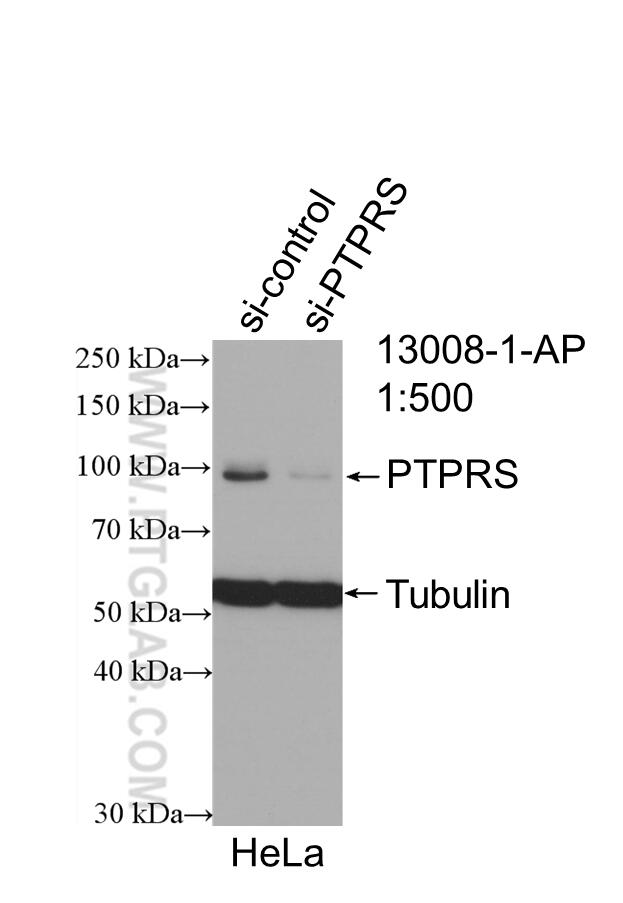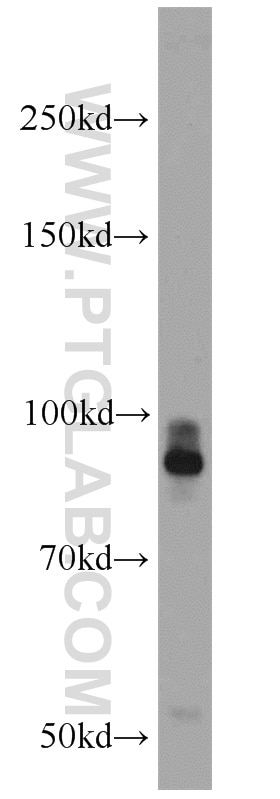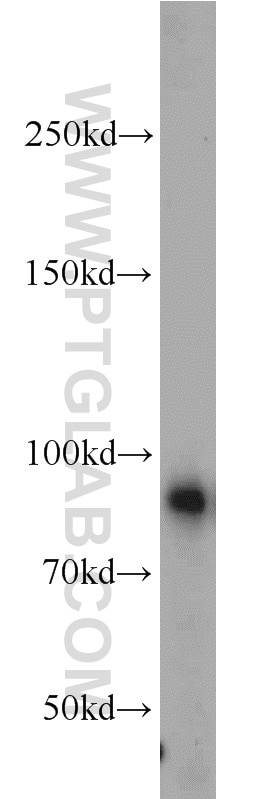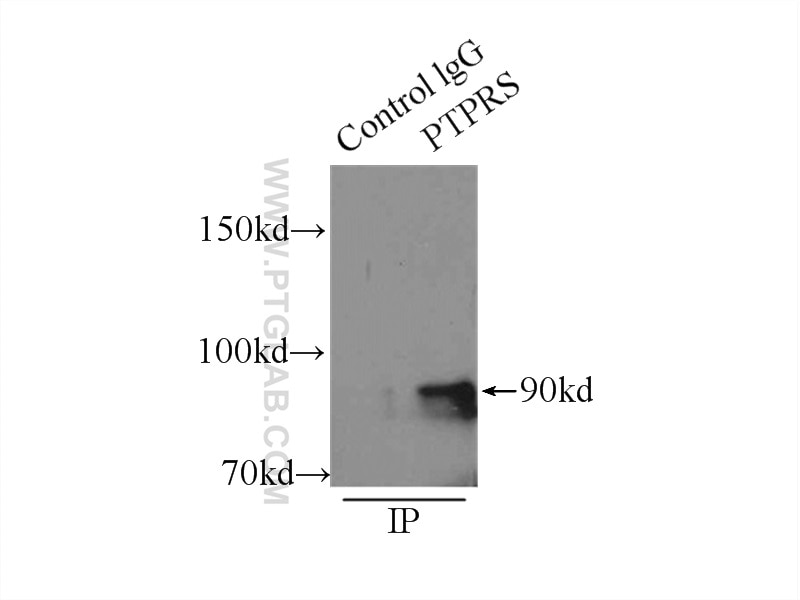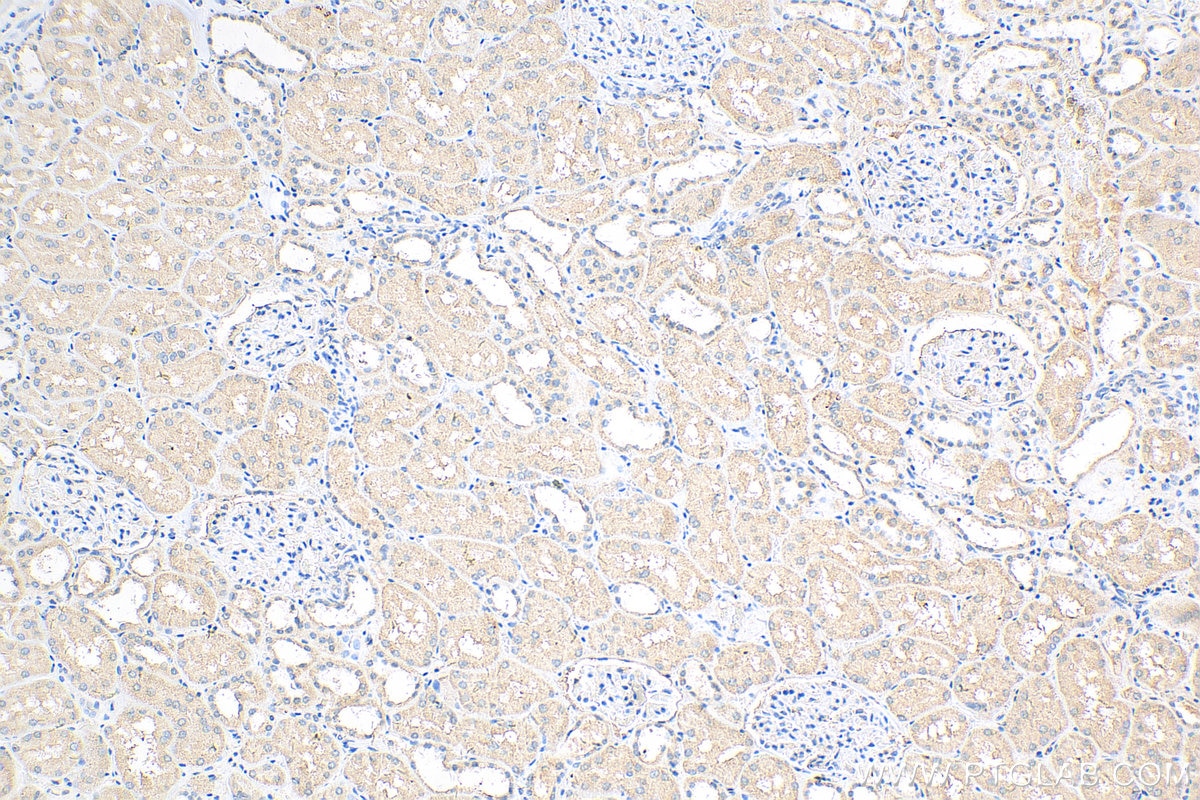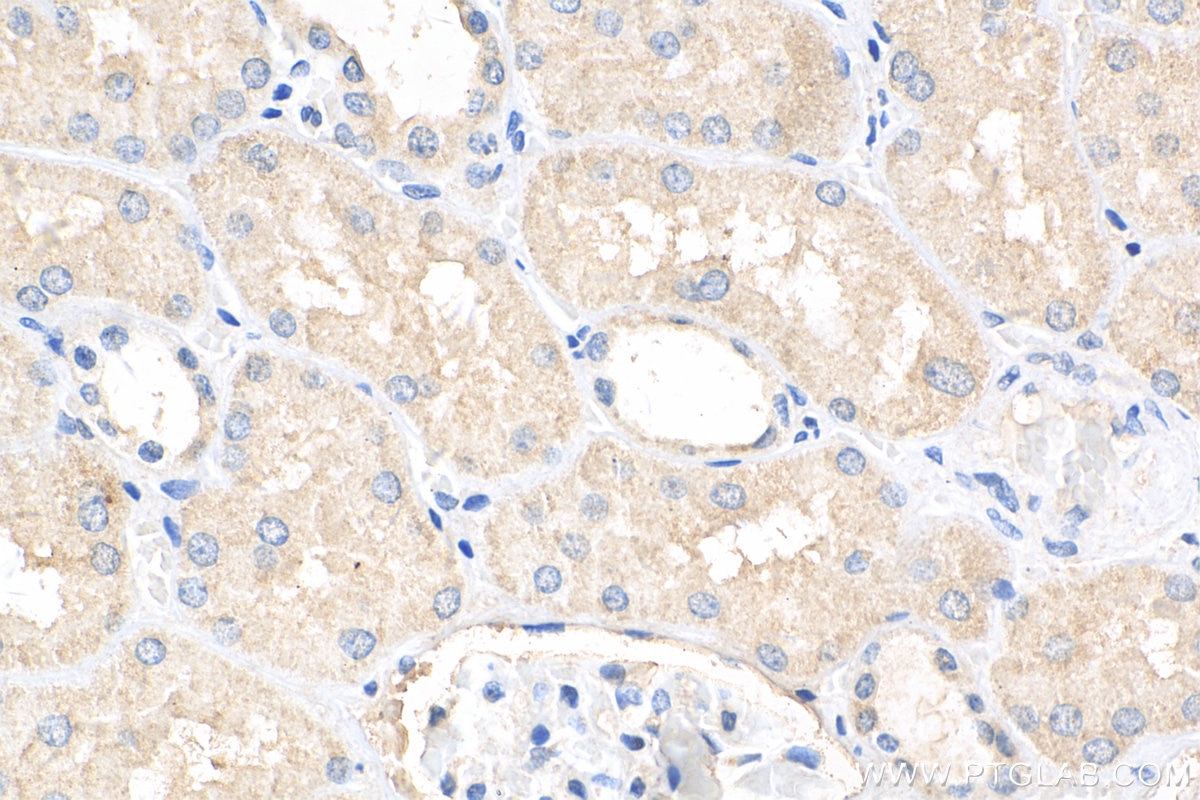- Featured Product
- KD/KO Validated
PTPRS Polyklonaler Antikörper
PTPRS Polyklonal Antikörper für WB, IP, IHC, ELISA
Wirt / Isotyp
Kaninchen / IgG
Getestete Reaktivität
human, Maus, Ratte
Anwendung
WB, IHC, IF, IP, ELISA
Konjugation
Unkonjugiert
Kat-Nr. : 13008-1-AP
Synonyme
Geprüfte Anwendungen
| Erfolgreiche Detektion in WB | HeLa-Zellen, Maushirngewebe |
| Erfolgreiche IP | Maushirngewebe |
| Erfolgreiche Detektion in IHC | humanes Nierengewebe Hinweis: Antigendemaskierung mit TE-Puffer pH 9,0 empfohlen. (*) Wahlweise kann die Antigendemaskierung auch mit Citratpuffer pH 6,0 erfolgen. |
Empfohlene Verdünnung
| Anwendung | Verdünnung |
|---|---|
| Western Blot (WB) | WB : 1:500-1:1000 |
| Immunpräzipitation (IP) | IP : 0.5-4.0 ug for 1.0-3.0 mg of total protein lysate |
| Immunhistochemie (IHC) | IHC : 1:50-1:500 |
| It is recommended that this reagent should be titrated in each testing system to obtain optimal results. | |
| Sample-dependent, check data in validation data gallery | |
Veröffentlichte Anwendungen
| KD/KO | See 1 publications below |
| WB | See 8 publications below |
| IHC | See 3 publications below |
| IF | See 1 publications below |
Produktinformation
13008-1-AP bindet in WB, IHC, IF, IP, ELISA PTPRS und zeigt Reaktivität mit human, Maus, Ratten
| Getestete Reaktivität | human, Maus, Ratte |
| In Publikationen genannte Reaktivität | human, Maus, Ratte |
| Wirt / Isotyp | Kaninchen / IgG |
| Klonalität | Polyklonal |
| Typ | Antikörper |
| Immunogen | PTPRS fusion protein Ag3691 |
| Vollständiger Name | protein tyrosine phosphatase, receptor type, S |
| Berechnetes Molekulargewicht | 128aa,14 kDa; 1948aa,217 kDa |
| Beobachtetes Molekulargewicht | 75-100 kDa |
| GenBank-Zugangsnummer | BC029496 |
| Gene symbol | PTPRS |
| Gene ID (NCBI) | 5802 |
| Konjugation | Unkonjugiert |
| Form | Liquid |
| Reinigungsmethode | Antigen-Affinitätsreinigung |
| Lagerungspuffer | PBS with 0.02% sodium azide and 50% glycerol |
| Lagerungsbedingungen | Bei -20°C lagern. Nach dem Versand ein Jahr lang stabil Aliquotieren ist bei -20oC Lagerung nicht notwendig. 20ul Größen enthalten 0,1% BSA. |
Hintergrundinformationen
Type II a receptor protein tyrosine phosphatases (rPTPσ) are cell surface receptors important for nervous system development, function, and repair.The expression of rPTPσ has previously been reported in b-cells and other target organs for INS although the probes chosen did not permit to distinguish between the splice variants.Proteolytic processing near the transmembrane domain generates an extracellular N-terminal E-domain of 130 kDa and a C-terminal P-domain of approximately 85 kDa of rPTPσ,and the short splice variants rPTPσ 3 and 4 contain an E-domain of 95 kDa (PMID: 16552719). rPTPσ expression was observed in tissue lysates of the adult mouse sensory-motor cortex and thoracic spinal cord (T8-T10) as a 75-80kDa immunoreactive band (PMID: 19780196).
Protokolle
| PRODUKTSPEZIFISCHE PROTOKOLLE | |
|---|---|
| WB protocol for PTPRS antibody 13008-1-AP | Protokoll herunterladen |
| IHC protocol for PTPRS antibody 13008-1-AP | Protokoll herunterladenl |
| IP protocol for PTPRS antibody 13008-1-AP | Protokoll herunterladen |
| STANDARD-PROTOKOLLE | |
|---|---|
| Klicken Sie hier, um unsere Standardprotokolle anzuzeigen |
Publikationen
| Species | Application | Title |
|---|---|---|
ACS Chem Neurosci Small Molecules Targeting PTPσ-Trk Interactions Promote Sympathetic Nerve Regeneration. | ||
J Gene Med Downregulation of lncRNA HCG11 promotes cell proliferation of oral squamous cell carcinoma through sponging miR-455-5p. | ||
Curr Eye Res Expression of Perineuronal Nets, Parvalbumin and Protein Tyrosine Phosphatase σ in the Rat Visual Cortex During Development and After BFD. | ||
J Cell Biochem Chondroitin sulfate proteoglycan represses neural stem/progenitor cells migration via PTPσ/α-actinin4 signaling pathway. | ||
Aging Cell Chronic TNF exposure induces glucocorticoid-like immunosuppression in the alveolar macrophages of aged mice that enhances their susceptibility to pneumonia |
